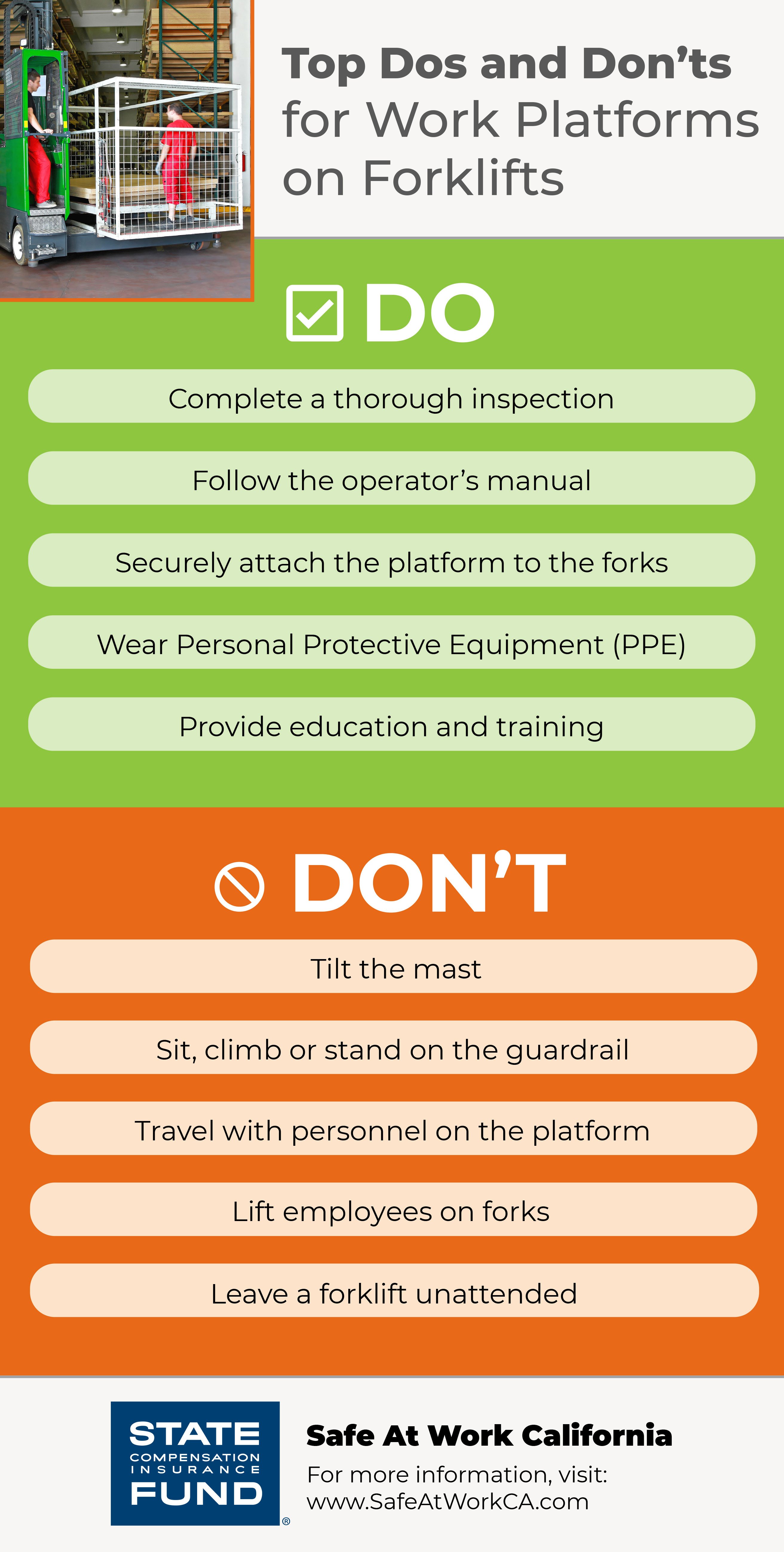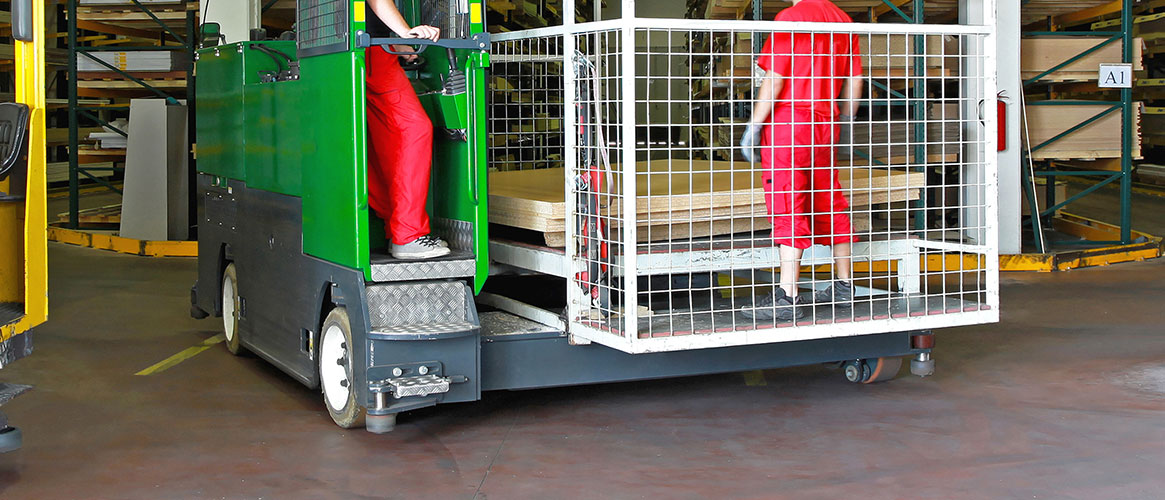An employee was counting inventory in a warehouse. He was 16 feet above the floor on a railed wooden platform, elevated by a forklift. As the employee worked, the platform tipped to one side and began to break, throwing him against the railing. The railing broke and he fell from the platform. He twisted in the air and managed to land on his feet. He shattered both heels when he landed on the concrete floor.
The employer had directed the foreman to purchase a certified safety platform for lifting personnel to count inventory. Instead, the foreman had obtained a railed wooden pallet, left behind by an earlier construction crew, and had been using the pallet as a platform for over a year before the accident occurred.
Lack of education and training is one of the primary contributors to forklift accidents.
 What your employees need to know about work platforms on forklifts
What your employees need to know about work platforms on forklifts
This is a unit or cage, secured to the forks of a forklift. The use of this platform allows employees to work at heights or in difficult-to-reach places. It also has room to carry materials or tools needed for the job.
The platform must have proper guardrails and a toe board. It also must be of sufficient size to accommodate the individual as well as tools and other work material. The floor of the platform must be slip-resistant and free of holes that are larger than one inch in size.
Without this equipment, serious injuries can result—such as the warehouse incident referenced above.
What your employees need to do when working from a platform on a forklift
Refer to the forklift's manual to verify the forklift’s loading capacity and never exceed that capacity.
The forklift operator must be at the controls, when employees work from the elevated platform. The forklift may only be moved to make minor positioning adjustments. The operator must be in regular communication with workers on the platform. These and other important steps are covered in our 10 Do’s and Don’ts for Work Platforms on Forklifts.
Employees must also wear hard hats and take extra safety precautions when working near electrical lines.
What to cover at your safety meeting on working from a platform on a forklift
Discuss with your employees why they need to use the proper platform. You can reference the story above as an example of what can happen if the rules are not followed.
Other training topics include:
- Safely operating a forklift. All forklift operators must complete a certification program to ensure they’re qualified to operate the unit safely.
- Reviewing the manuals for the forklifts used at your workplace. Make sure employees know where to find these for reference at any time.
- Discussing and demonstrating how your employees can inspect the equipment to make sure it’s working properly. Examples include checking for fluid leaks, cracks or other damage to the forks, and damage to hoses, mast chains, and cables.
- Review the 10 Do’s and Don’ts for Work Platforms on Forklifts.
- Review your emergency procedures should an injury occur.
Use extra caution when elevating other individuals with a forklift. Make sure they have the right equipment so they can perform their job as safely and efficiently as possible.
For more forklift safety information, see our safety meeting on using a forklift.

